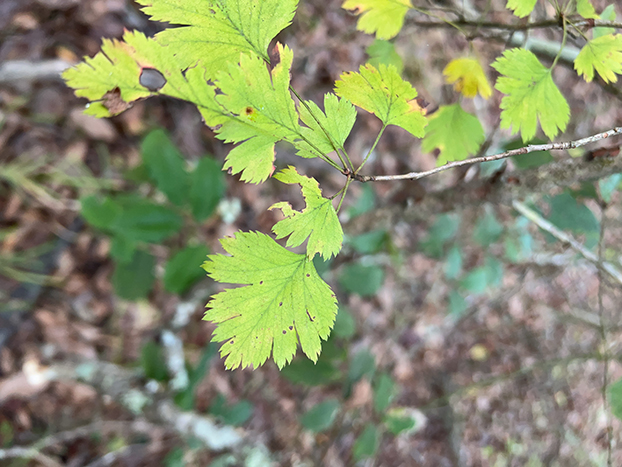Canopy Tour: Parsley leafed shrub one of several hundred native species
Published 3:07 pm Tuesday, November 26, 2024

- Parsley Leaf Hawthorn found at Yockanookany Wildlife Management Area in McCool. Typically, pictures of trees featured in Canopy Tour are taken in Lincoln County but this was captured on a recent hunting trip. (Hunter Cloud | The Daily Leader)
MCCOOL — Its leaf looked like a maple tree leaf mixed with geranium leaf. Out of all the trees seen at Yockanookany Wildlife Management Area, it stuck out to me the most. My plant identification app said it was a Parsley Hawthorn.
Did you know there are approximately 800 indigenous species of Hawthorn in North America, 100 of those are indigenous to the south and about 70 of those attain the stature of a small tree according to the Mississippi Forestry Commission. Parsley Hawthorn specifically is a small deciduous tree or shrub which can grow up to 25 feet tall.
It lives in sandy alluvial woods and pastures across much of the southeast. Hawthorns specifically can form thickets and in turn provide great habitat for small mammals and birds. They have a medium shade tolerance, low fire tolerance, low drought tolerance and a medium tolerance for wetlands.
Trending
Hawthorns produce a fruit called a pome which are a quarter of an inch in diameter. Flowers are white and usually bloom in March to May. The fruit is a source of food for wild turkey, ruffed grouse, squirrels, raccoons, rabbits, small rodents and deer. Leaves of the plant are not considered quality browse for deer but they are known to eat the twigs and leaves.
Songbirds such as cedar waxwings, northern flickers, cardinals, mockingbirds and blue jays eat the fruit and are instrumental in the dispersal of seeds.
Mississippi Forestry Commission’s guide to Mississippi trees and shrubs state there is no known commercial use for the hawthorn shrubs.
Canopy Tour is a brief article we hope helps readers learn more about trees, how to identify them and gain an appreciation for their ecological role in native systems.




